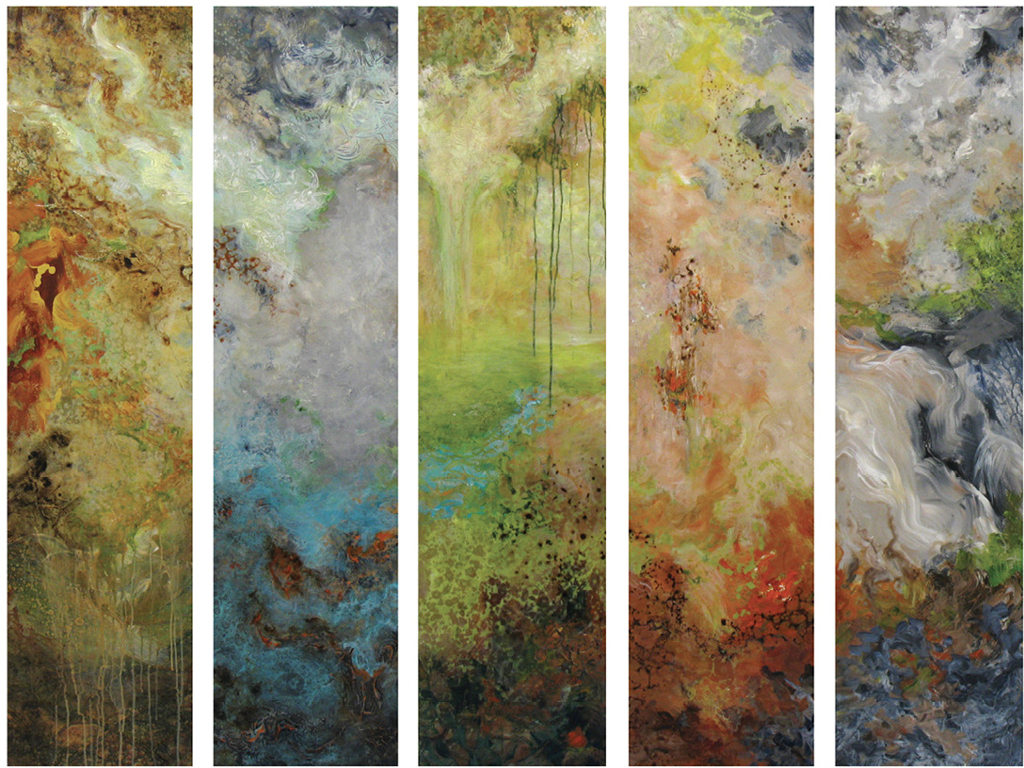
How do you get that surfboard finish so popular on contemporary paintings? You know, that super clear, glossy, smooth top coat. This can be obtained using commercial resins, which come in two parts; a resin and hardener. Resins are very toxic, though, so here is a way to get a similar finish with no health hazards. Adding a glass-like smooth layer enhances colors and can be added as a top coat, or in between painting layers to enhance refraction.
Substrate
Any primed painting surface
Tools
A painting knife, spatula or other spreading tool
Products
A pourable acrylic gloss medium of your choice (see Section 4: Tips for Coated Pours), spray bottle with isopropyl alcohol
For Cleanup
Water, water container, paper towels or rags

STEP 1 Create an Underpainting
Start with any surface. This surface is painted with Permanent Green Light heavy body paint. The brushstrokes have a visible texture that will disappear after pouring.

STEP 2 Pour and Spread Medium
Prop up the surface from the table or floor. (For more information on set up see Section 4: Tips for Coated Pours.) Select a pourable acrylic medium and gently pour over the surface. Use a spatula or knife to spread the acrylic evenly so it is not too thick. Immediately spray lightly with alcohol to remove bubbles. Let dry undisturbed on a level surface.

This surfboard finish sports a clear glossy smooth layer.

A surfboard finish on this quintet painting integrates the five separate panels and creates an interesting contrast between the textural visual effects and the final smooth glossy surface.
ODE TO A ROAD TRIP #9
Bonnie Teitelbaum
Acrylic on five panels
Each panel 48" × 12" (122cm × 30cm)